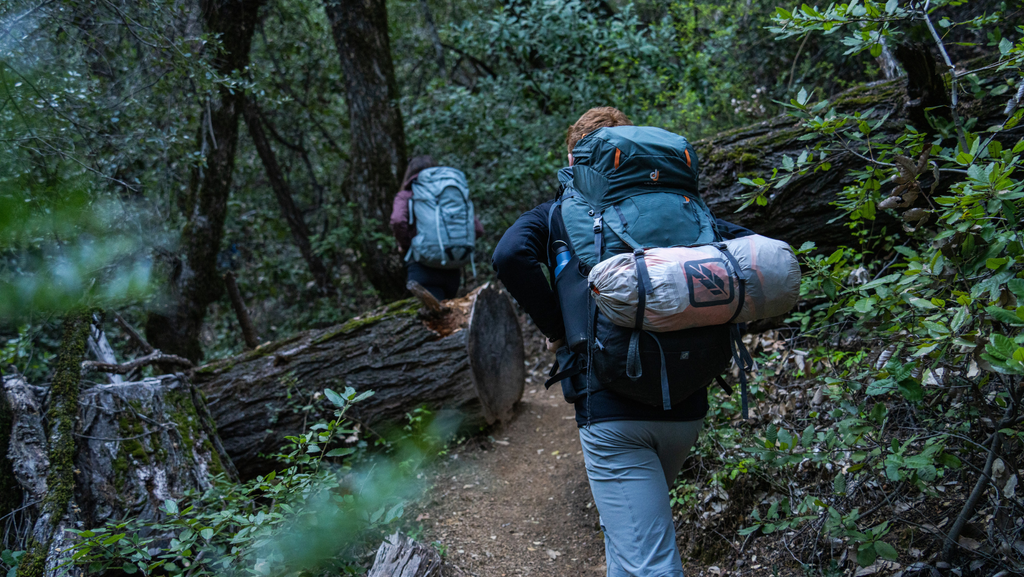
What aspects of a trek qualify it as a "thru-hike"? A journey from beginning to finish along a long-distance path, such as the Appalachian Trail or the Pacific Crest Trail, is known as a thru-hike. For example, the Pacific Crest Trail is over 2,600 miles long and goes from Mexico to Canada, while the Appalachian Trail stretches from Georgia to Maine and is over 2,100 miles long. These long trails are best described as thru hiking.
Different takes on the traditional through-hike
Alternate routes have emerged in response to the explosion in popularity of these hiking paths. At some times, It is just not possible for many individuals to dedicate themselves to a thru-hike for more than five months at a time. However, It's likely that purists may argue that none of these possibilities qualify as "genuine thru-hikes," but the meaning of "thru-hike" is far from being carved in stone. In the end, thru-hiking is about posing challenges to oneself, and it is entirely up to you to choose what those challenges are.
Consider the practice of "section hiking." : There are hikers who only complete a single segment of a traditional thru trail . It is possible to complete a long path like the Pacific Crest Trail by section hiking it. This allows you to spread out your accomplishment over the course of many hiking seasons throughout the year.
To finish a traditional thru-hike in a manner that is not classic, one might "flip flop" the trail. In this, you won't walk the path in its entirety all at once; instead, you'll do it in non-sequential segments, beginning somewhere in the center. The benefit of using this technique is that it allows you to bypass the hordes of hikers who take the traditional route from beginning to finish. You might even flip flop deliberately to avoid being caught in bad weather. The flip flopping strategy will make your trail and transit itinerary more difficult, which is one of the drawbacks.
Choose a route that is significantly shorter: One example of such a path is the Superior Hiking Trail, which stretches more than 300 miles along the coast of Lake Superior in Minnesota. The amount of time you need to invest is somewhat less than one month. There are many more paths around the nation that are about the same length and can be an alternative for it.
Challenges on a Thru-Hike
Your determination will be put to the test several times and in a variety of different ways if you set out on a thru-hike because of the challenges that you will face over the course of the next six months.
Physical Challenges
Simply glancing at the statistics on the PCT will give you a clear image of the situation: A cumulative elevation gain of little under half a million feet was achieved over the more than 2,650 miles of trekking that were covered. The statistics for the A.T. will be the same. That is why Thru-hiking can be physically demanding.
Other forms of physical difficulty might take the form of anything from blisters to significant injuries, Lyme disease to altitude sickness. You have to get yourself ready for all of these challenges, and you will almost certainly have to prevail over some of them.
Pro Tip: Prepare yourself in advance for your next journey. Before you start your thru-hike, you should supplement your training by going on a number of hiking excursions. Although there is nothing that will really prepare your feet for the load that they will endure, you may toughen them up by carrying the same weight on your shakedown trips as you anticipate to have on your thru-hike. This will help your feet become more resilient to the stress that they will face.
Also remember that attending a class in first aid can help you a lot in emergency situations such as you are not sure what might happen during your hike. Furthermore, examine the contents of your first-aid kit to ensure that you have everything you need. Being prepared is the least and most important thing to have.
Mental Challenges You May Face
The majority of people who walk the PCT do it on their own. Even though hikers on the A.T. and PCT meet and camp with a large number of other hikers along the route, you still need to be comfortable spending time by yourself. At some time, one may find that the Zen of isolation has transformed into pure loneliness.
After a few hundred kilometers, it's conceivable that you'll start to wonder why you chose to undertake this activity in the first place. This is something else that may happen. It's possible that you've even entertained the idea of giving up.
Pro Tip: Be conscious of the fact that there will be times along the trip when you will feel like giving up, since this is a normal and unavoidable occurrence. Keep in mind that you should never give up on a poor day. Take a rest if you must, but don't quit!
Adding up, keep in mind that it is best to set your goals manageable. It might be a mountain, a state boundary, or even a national park that is famous across the world. Your feeling of success will be fueled and the trip will be divided up into more manageable milestones if you keep checking things off as you go along the way. Remember to chew only what you can swallow.
Financial Challenges
In reality to this, you won't have a job and will not be receiving any salary for the next six months. Even if you won't be spending a significant amount of money on petrol or hotel, creating a budget for the trip might still be difficult. The cost of a thru-hike may range from as low as $1 per mile to $8,000 dollars for a budget that doesn't skimp on any of the essentials, the two largest expenditures being gear and food.
Pro Tip: Researching alternatives such as routes, food saving tips, not so expensive gears and buying only essential needs is the approach that you will use to overcome the financial obstacle. Remember that expensive isn't always best.
The Planning Process
You are in the process of organizing a significant big journey and this requires an intensive approach. The majority of hiking professionals agree that you should schedule even more time for preparation than real trekking time. Embrace the planning process as an integral part of the excitement, and start the process at least eight months before the event.
Preparation For Food and Water
We never underestimate the need for water. In the arid regions of the Pacific Crest Trail, knowing where you will be able to acquire water might very literally mean the difference between life and death. During the summer months, there are sections of the Appalachian Trail that may not have any water sources. Even in places where there is a plentiful supply of water, you should still check to be sure that the water you consume has not been tainted. Your overall travel plan should include a significant amount of time spent on the means by which you will transport and purify the whole of the water supply.
Planning your meals is as important as finishing your trail. You will have to strike a balance between the desire to satisfy your cravings for calories, convenience, and taste and the pressing requirement to maintain a healthy weight. Some individuals prepare for the whole journey in advance, sending their food supplies for each leg of the journey in the mail. Others want to satiate any appetites that develop along the way by purchasing at least part of the food cache for each segment at the towns that serve as resupply points along the trail.
Itinerary
Here are some tips that might come in handy as you go along your route.
Mileage: It will be different every time, but you still need to know how many miles per day you want to average in order to estimate when you will complete the journey.
Permits: Trail permits, campfire permits, permission to cross the Canadian border, permits to camp in the bush, and more may fall under this category. Regulations are subject to frequent revision, and trail admission limitations may be a source of difficulty. There is a possibility that you won't need too many permissions, but for some of them, you have to submit an application months in advance.
Transportation: Furthermore, in making travel plans to transport you to the area by airplane, train, or vehicle, you should also investigate and check the availability of shuttle services near trailheads.
Weather is a big consideration: It is important to be prepared for contingencies, such as severe weather, trail closures, injuries, and other mishaps, so you should research some alternate routes in advance.
Spots to resupply essential needs:: It may be difficult to find places where you may rest and resupply, so it is important to carefully plan how you will spend those days.
Prepare Your Gear
If you are already a backcountry hiker, you probably already have a good deal of existing gear that you will need. As you compile your own personal gear list for a thru-hike, it is important to remember that you will need some new pieces of equipment and that you will need to forego some of the creature comforts that you are used to enjoying on shorter day hikes.
Pro Tip:
Footwear: Some ultralight backpackers choose to travel the whole path in trail runners, while others swear on full-leather boots. No matter what you decide, you'll go through more than one pair of shoes; if you choose trail runners, you'll go through many pairs.
Swap out seasonal gears: It makes sense to include seasonal clothing and equipment that can be changed out at crucial resupply stations along the trip. Some examples include clothing and gear that is cooler and lighter for the summer, as well as equipment such as micro spikes and a sleeping bag that is warmer for the spring and autumn seasons.
Robust is best! Get gear that is more durable will be able to withstand the hundreds of miles of wear and tear better.
Lightweight is a must! Bringing equipment that is lighter in weight will reduce the amount of weight that you will have to lug for what may be hundreds of kilometers.
Thru-Hiking may require a lot of effort and dedication to finish, that is why it is important to prepare your best beforehand. The journey can be challenging but will be definitely worth it and rewarding in the end! Cheers!



